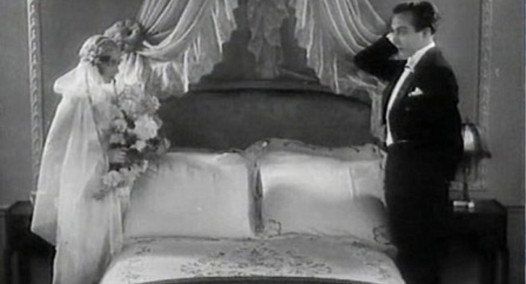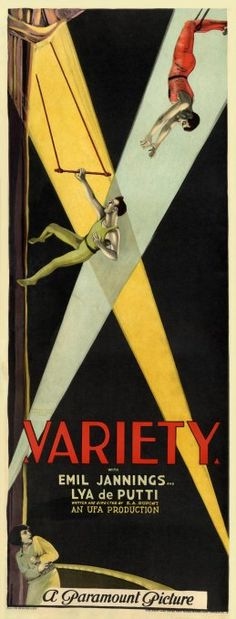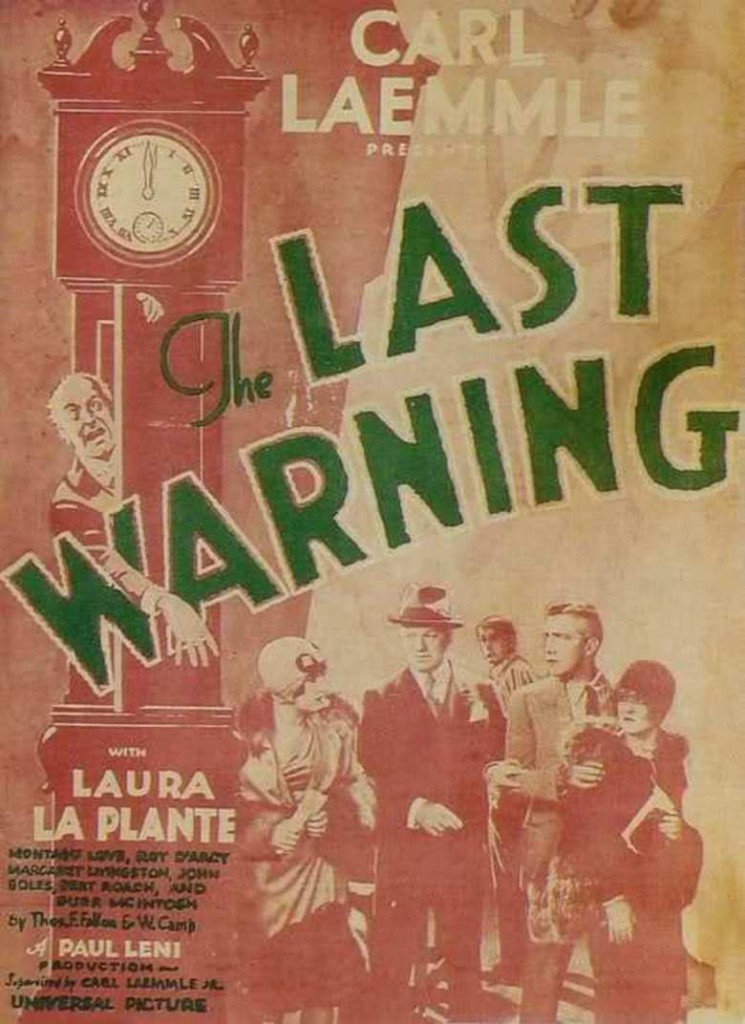
By Michael T. O’Toole.
For those who enjoy a good silent film, you’ll seldom find a more a captivating outlet than the stylish San Francisco Silent Film Festival (held this year between June 2-5). It’s an overwhelming aesthetic treat: the fine period wardrobe of the attendees; the savvy, academic discussions; a very wide range of film literature; and the vintage beauty of the near century old Castro Theater, resplendent with art deco chandeliers, scrafitto wall designs and a Mighty Wurlitzer organ.
Oh, and let’s not forget the films, for cinema buffs are here for the programming and the best of the lot were to be treasured. Much as we’d love to go over the entire four-day run of the festival, we simply don’t have that much space on this site for that. Like the years before, we prefer to concentrate on the highlights. What were our criteria? We looked for certain uniqueness in style, a professional sheen in all departments and simply what tickled us. The list below is not an oracle, but a good, surefooted list to stir your interest. Take it from there.
 VARIETÉ (1925)
Directed by E.A. Dupont;
Starring: Emil Jannings, Lya De Putti, Warwick Ward; Musical Accompaniment: Berklee Silent Film Orchestra
VARIETÉ (1925)
Directed by E.A. Dupont;
Starring: Emil Jannings, Lya De Putti, Warwick Ward; Musical Accompaniment: Berklee Silent Film Orchestra
The Plot: Boss Huller (Emil Jannings), a retired trapeze artist working as a manager for a peepshow of dancing girls, is asked by a friend to become a ward for a young lady, Bertha-Marie (Lya De Putti). He puts her to work in his dancing troupe, and as her star grows, so does his obsession with her. After he abandons his family for her, they leave for Berlin where she can train as a trapeze artist. Discovered by a famed aerialist, Artinelli (Warwick Ward) they head to London where the trio perform to packed houses. But when Artinelli develops an attraction to Bertha, Boss’ jealousy becomes too consuming.
In Essence: Betrayal, revenge, murder… ripe melodrama for sure, but such pulp storylines packed houses in 1925, and this one was a huge worldwide hit. If your instinct is to feel the tale might be too bombastic for modern empathy, you might be right, but you’d be missing out on some artfully measured delivery here. In Dupont’s care, he gives the material a haunting pace and wisely chose master cinematographer Karl Freund to deliver some fluid, unfettered camera work – especially when he’s employing the subjective view of the acrobats with dizzying lights and spinning long takes. The actors are fine, with the ever robust Jannings delivering another performance of fallen dignity and wounded compassion with grace and intensity. A very pleasing piece of Germanic fatalism.
 THE STRONGEST (1929)
Directed by Axel Lindblom and Alf Sjöberg;
Starring: Sivert Braekemo, Hjalmar Peters, Anders Henrikson; Musical Accompaniment: The Hot Club
THE STRONGEST (1929)
Directed by Axel Lindblom and Alf Sjöberg;
Starring: Sivert Braekemo, Hjalmar Peters, Anders Henrikson; Musical Accompaniment: The Hot Club
The Plot: Olsen (Sivert Braekemo), a young sailor, meets Ingeborg (Gun Holmquist), an attractive farm girl, on the road and agrees to help out as a stable hand. Conflicts arise when her father (Hjalmar Peters) a skipper and his assistant, Ole (Anders Henrikson), return home. Ole has long had an attraction for Ingeborg, and as he and Olsen join her father’s sealer in the arctic, they must compete as rivals to decide who is the “stronger,” and thus, win the heart of their sweetheart.
In Essence: Given that this festival had played more than their fair share of Swedish miserablism over the years, I was more than happy to view this one. The structure is simple enough, with the strength of the male leads (Braekemo and Henrikson) being tested against the allegorical backdrop of the arctic as they compete for their girl’s affection, but the performances by them are exceptionally good, building the tense, watchful air the men have with each to a stern climax. Also the amazing arctic vistas (complete with breaking ice flows and stirring chase scenes in the snow) lift the proceedings with a brooding isolation and naturalism that underscores the excitement. The sparse, somber score performed by the Hot Club, was cunningly appropriate and unobstrusive.
 TWO TIMID SOULS (1928)
Directed by Rene Clair;
Starring: Pierre Batcheff, Vera Flory, Maurice de Fraudy, Jim Gerald;
Musical Accompaniment: Live Musical Accompaniment by the Mont Alto Motion Picture Orchestra
TWO TIMID SOULS (1928)
Directed by Rene Clair;
Starring: Pierre Batcheff, Vera Flory, Maurice de Fraudy, Jim Gerald;
Musical Accompaniment: Live Musical Accompaniment by the Mont Alto Motion Picture Orchestra
The Plot: Fremissin (Pierre Batcheff), a v-e-r-y timid attorney, has trouble confessing his love for a woman (Vera Flory), and that could lead to trouble ahead as her equally timid father (Maurice de Fraudy) promises her hand in marriage to a pushy suitor (Jim Gerald) that Fremissin once defended for spousal abuse.
In Essence: I’ve written about this film before and Clair is one of my favourite directors. Top quality is just that, and master farceur Clair delivered one of his most memorable silent films with this one. His gliding, insouciant style makes the material move effortlessly and convey light hearted romanticism that is never ankled by treacle or silliness. His barrage of visual tricks (split screens, flashbacks, montages and breaking the wall with the audience) is a blast to behold and in the end, the spirited performances – with the charming Batcheff as the befuddled hero and a top comic foil in Gerald – make this one an engaging charmer.
 THE LAST WARNING (1929)
Directed by Paul Leni;
Starring: Laura La Plante, Montigue Love, Bert Roach, Roy D’Arcy, John Boles;
Musical Accompaniment: Donald Sosin
THE LAST WARNING (1929)
Directed by Paul Leni;
Starring: Laura La Plante, Montigue Love, Bert Roach, Roy D’Arcy, John Boles;
Musical Accompaniment: Donald Sosin
The Plot: Five years since the murder of one actor during a performance, Arthur McHugh (Montague Love) is the producer who decides to solve the mystery by again staging the play with the remaining cast. During the repeat performance another murder occurs! Who could be guilty? The leading players (Laura LaPlante, Roy D’Arcy)? The Stage Manager (Bert Roach)? The short-tempered director (John Boles)?
In Essence: The lone American silent to make this list, this one harks back to Universal’s earliest forays into the chiller genre that they would develop for years to come. Directed by one of the great could-have-beens of cinema lore, Paul Leni, a German immigrant whose limited but stunning output (Waxworks, The Cat and the Canary, The Man Who Laughs) displayed a seductive visual style and a knack for making the creakiest of material connect with wry touches of humour and heart. Sadly, The Last Warning would be his last film as he died that year, at the age of 44, from blood poisoning from an infected tooth. Still, this effort was an imaginative one, with double exposures, frantic cross cutting, terse close-ups and the proper feel and timing for well staged spooking. The pacing never flags and Leni lets a game cast have some funny, eye-rolling turns and pratfalls. Donald Sosin’s charming, jaunty piano score gave the movie an off-handed playfulness that dovetailed the presentation perfectly.
Michael T. O’Toole is a film journalist, screenwriter and filmmaker. He spent ten years writing for the Turner Classic Movies before taking his talents to Film International. His short films can be viewed here.
